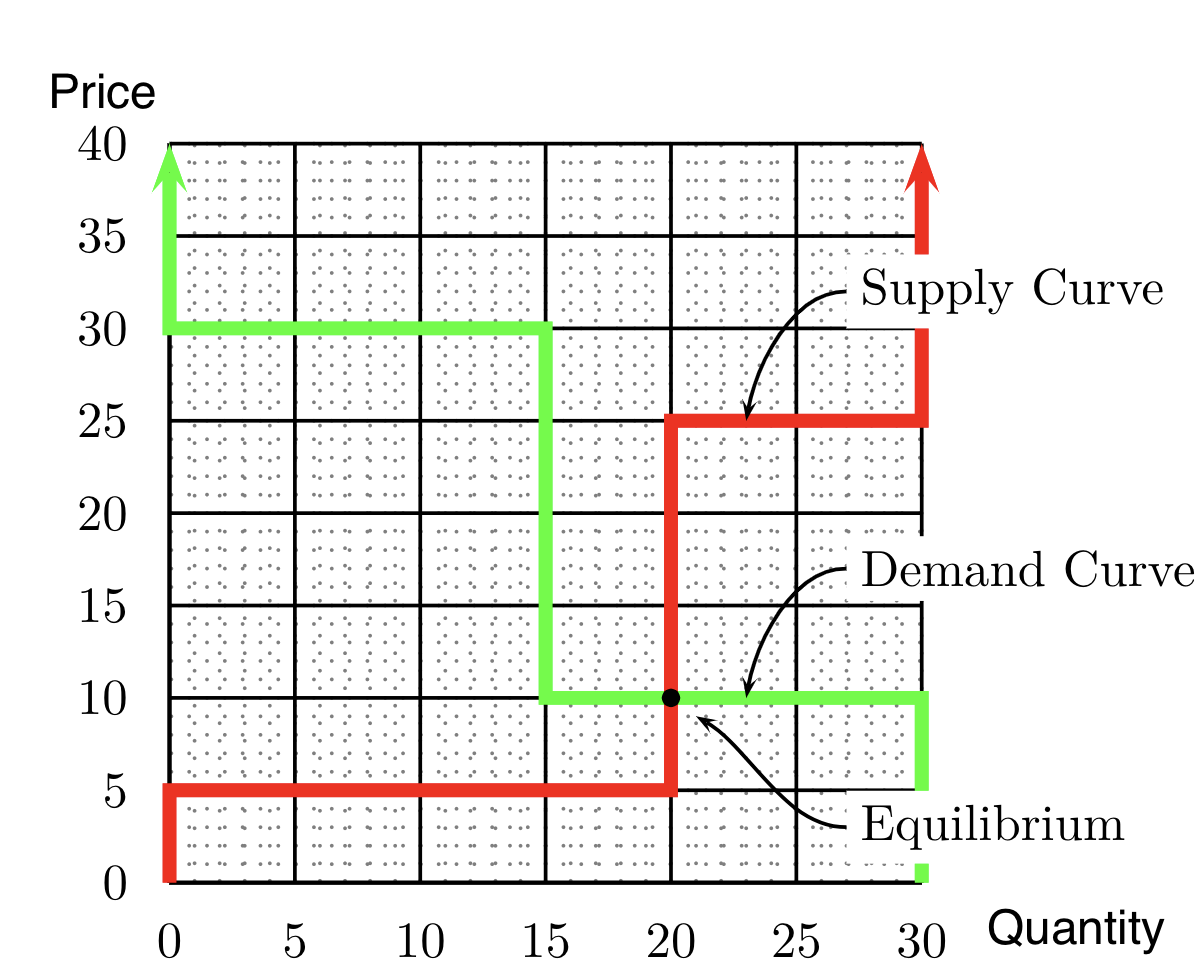Version 1.01, October 2019
The competitive equilibrium price for a good is the price at which the total amount that suppliers want to sell is equal to the total amount that demanders want to buy. The quantity that is supplied and demanded at the competitive equilibrium price is the competitive equilibrium quantity. Thus to find the competitive equilibrium price, simply draw the supply and demand curves and find where they cross. If the two curves intersect at a single point, then you can read across to the vertical axis to find the competitive equilibrium price and down to the horizontal axis to find the competitive equilibrium quantity. (Sometimes the supply and demand curves may overlap at more than one point. In this case, there will be more than one competitive equilibrium price and/or quantity.)
At any price higher than the competitive equilibrium price, suppliers want to sell more units than demanders want to buy. At any price lower than the equilibrium price, demanders want to buy more units than suppliers are willing to sell. But at the competitive equilibrium price, suppliers want to sell exactly as many units as demanders want to buy.
Figure 1 shows an example with two different kinds of demanders and two kinds of suppliers. The equilibrium price is 10€ and the equilibrium quantity is 20 units.
